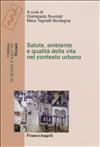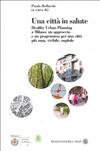
LIBRI DI PAOLA BELLAVITI


Living in the City of the Dead. A research-action project for an exceptional informal habitat - The article focuses on one of the most suggestive and controversial habitats of the Cairo megalopolis, the ‘City of the Dead’, as the vast areas of monumental cemeteries are collectively termed. Over time they have actually become a true and genuine ‘city’ within the city, inhabited by hundreds of thousands of people. It is a slum according to some definitions currently in use, but a very particular slum which is host to both a huge and special historical and architectural heritage and at the same time to a residential environment which is unique of its kind, in which a heterogeneous local society maintains the City of the Dead ‘in life’, by means of a specific residential culture linked to the sepulchral nature of the places. A research and action project intends to try and deconstruct the negative and destructive images currently adopted by Cairo’s urban planning policies for this urban environment. It does this by exploring the possibilities of a more detailed portrayal from different viewpoints in order to stimulate action to conserve and enhance the City of the Dead that is based on recognition of its value given by the ineluctable links between the monumental necropolis and the living environment.


European Neighbours. The involvement of inhabitants for urban well-being - The cities involved in the Interreg IIIC, European Neighbours programme which lasted 30 months from June 2005 to December 2007 were Belfast, Brussels, Milan and Lyon. Each city defined its own general theme, the value that the involvement of inhabitants can have for improving the quality of life in their own urban context, by organising opportunities for inhabitants to meet and work on concrete issues and to explore ‘space’ and ways for citizens to become actively involved in policies affecting urban quality and well-being. Participation in the programme of international exchange constituted an important opportunity for learning and it was a stimulus at the same time for the local promotion of new actions to improve the liveability of neighbourhoods. The paper reconstructs the objectives, the course and the outcomes of the programme and more specifically the ‘guide’ to the redevelopment of public space a collection of ideas for action and references to significant case histories and a proposal for the construction of an ‘Urban Well-being Network’.

To be well in towns and cities. From the quality of the space to the well-being of the inhabitants - The construction of a new approach to ‘urban well-being’ begins by reconsidering the space-well-being relationships established by traditional urban planning, which have long been fossilised in the standard practices of planning policies and services, which are increasingly less able to satisfy the new demands of contemporary cities for health and wellbeing. The ‘quality of space’ is connected not only with the physical and practical dimension of space but also to its ‘relational’ dimension between forms of life and environment and therefore to the use material and symbolic that people make of space. The intention is to employ a new focus on the forms of everyday life and practices in active citizenship involvement to intercept new needs and also independent social capacities to build well-being through processes of micro-change and the reinvention of people’s own living spaces. Public space, a clamorous example of urban hardship, is assumed as a privileged area for the deployment of such a perspective, by supporting capacities everyday, widespread, microscopic for ‘creating public space’ by society.

Urban well-being. Approaches, methods and practices to support the capacity to "be OK" in urban space - How do people live in towns and cities today? Because in the final analysis, is it so difficult to ‘be OK in a city’ today? And how can urban planners regain their capacity to promote conditions for general ‘well-being’ in urban space? This review tries to outline a new approach to ‘urban well-being’ intended as the chance and the capacity for everyone to ‘be OK’ in their own living space. What results is a change in the focus of attention onto behaviours and practices which inhabitants experience in their everyday lives and onto forms of responsibility and of making citizens active in the care and treatment of those common assets which create ‘urban well-being’. It is a shift of viewpoint which in order to become actual practice requires getting much closer to people by using polyphonic and inclusive approaches to investigation and decision-making which give preference to the dimensions of communication, expression and art, able to go far enough to include subjective sensory perceptions of space in planning and design.

Il rapporto tra salute, qualità della vita e ambiente: un tema di crescente interesse per le scienze sociali, ambientali e mediche. L’ambiente, nella sua dimensione di ecosistema in cui s’intrecciano relazioni significative, costituisce uno dei determinanti della salute più importante, ma anche quello più a rischio in quanto più fragile. Nell’ambiente l’individuo si muove verso strategie di salute e di qualità della vita.
cod. 1370.32


Healthy Urban Planning a Milano: un approccio e un programma per una città più sana, vivibile, ospitale
cod. 301.20



cod. 905.22

Quali opportunità per la Valle d'Aosta
cod. 2000.745